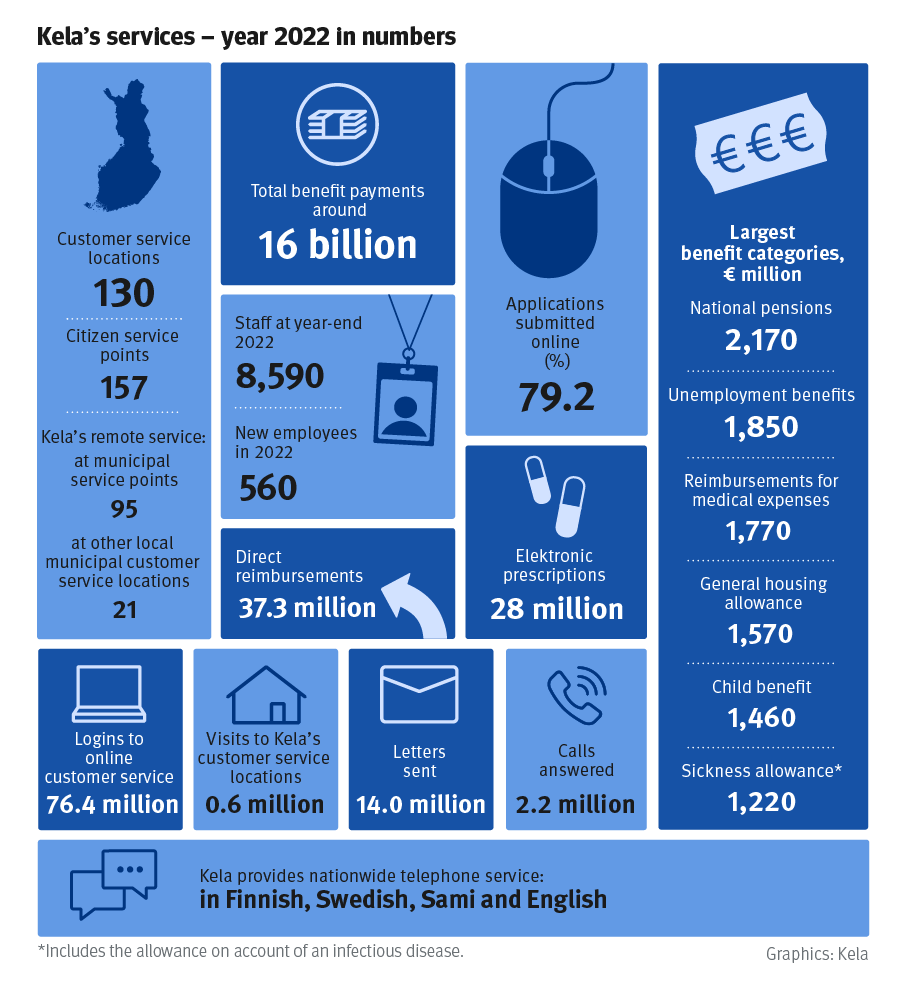Finances and key indicators
The financing of social security managed by Kela is based on the distribution principle, according to which the expenses for each year are financed by the income generated in the same year. For the purpose of managing the financing of benefits, Kela has a national pension fund, a health insurance fund and a general social security fund, from which benefits that are not covered by pension or health insurance are financed.
Funding
The total expenses of Kela's benefit funds amounted to EUR 16.4 billion. in 2020. Benefit expenses accounted for 97% of total expenses and operating expenses for approximately 3%.
National Pensions Index
A large part of the benefits paid by Kela are checked annually according to the National Pension Index.
Annual statistical reports
Key information on various benefits: housing benefits, pensions, rehabilitation, study benefits, family benefits, health insurance, occupational health care, unemployment security, disability benefits and military assistance.
Annual reports
According to Kela's strategy, customer, trust and information are at the core.
Key indicators
